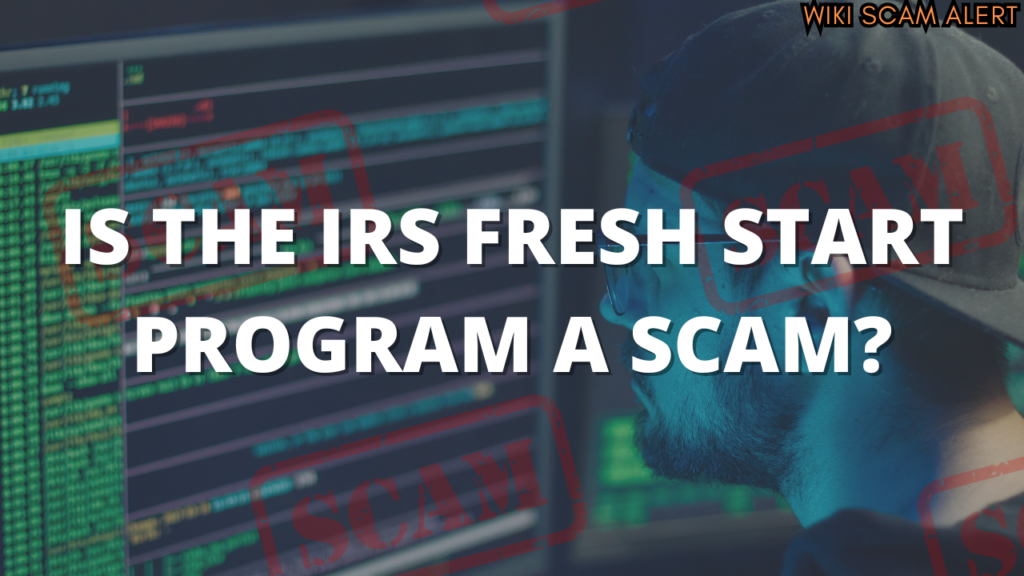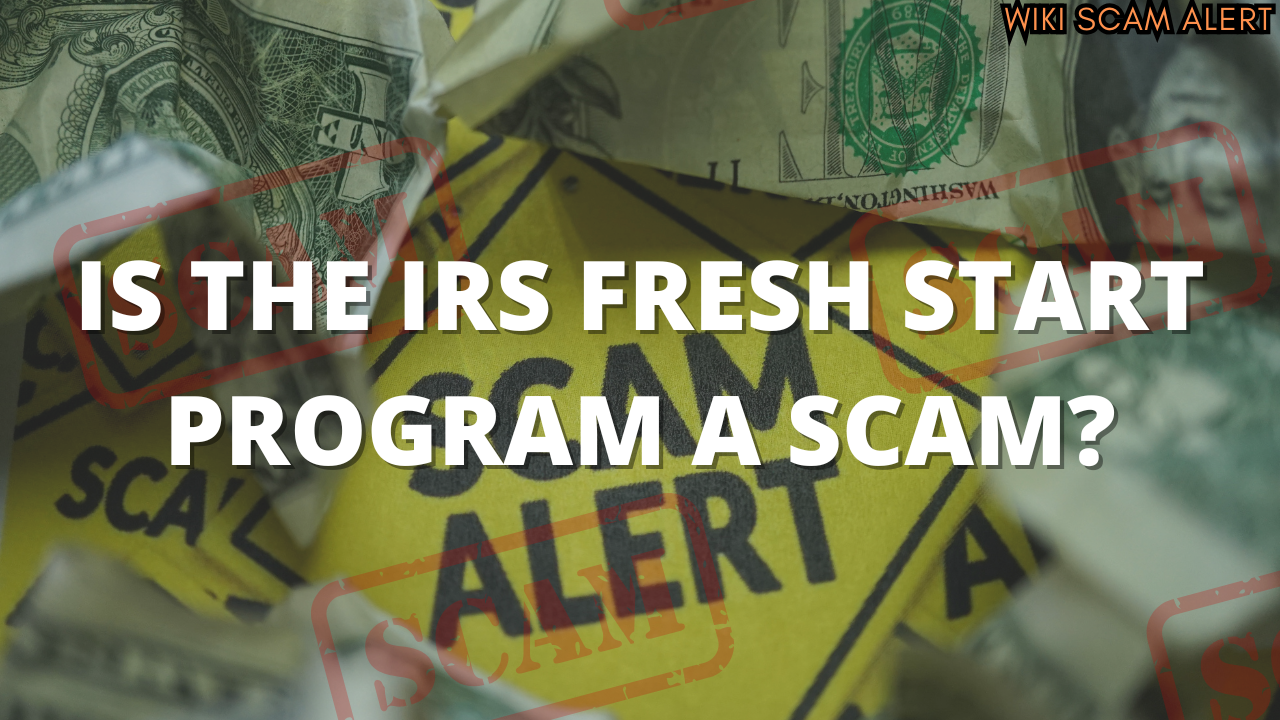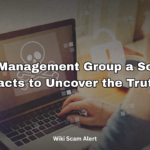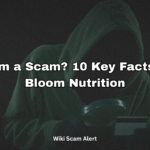Is the IRS Fresh Start Program a scam? Techrefly.com investigates this tax relief initiative, debunking myths and revealing 10 red flags to spot fraudulent schemes. Learn how to safely navigate tax debt solutions in 2025 with our detailed guide!
What Is the IRS Fresh Start Program?
The IRS Fresh Start Program, launched in 2011, is a legitimate set of tax relief options designed to help struggling taxpayers manage back taxes. It’s not a single program but a collection of provisions, including installment agreements, Offers in Compromise (OIC), penalty abatement, and tax lien relief. These aim to make debt repayment more flexible, such as allowing payments over six years or settling for less than owed. The IRS no longer actively markets “Fresh Start,” but its policies remain standard practice. Misleading marketing by some tax relief firms has fueled scam concerns. Check More Here:- 5+ Reasons Diamonds Are A Scam – Why The Industry Isn’t As Sparkly As It Seems
Why Scams Target the Fresh Start Program
Scammers exploit the program’s popularity by posing as IRS representatives or tax relief firms, preying on taxpayers desperate to resolve tax debt. They use high-pressure tactics, false promises, and the “Fresh Start” name to lure victims. With tax season amplifying financial stress, these fraudsters thrive, costing Americans millions annually through stolen funds or personal data. Awareness of scam tactics is crucial for tech-savvy taxpayers navigating 2025’s tax landscape.
How the IRS Communicates
The IRS primarily contacts taxpayers via mailed letters, not unsolicited calls, emails, or texts. Official notices include your taxpayer ID (partially masked), specific debt details, and appeal options. The IRS never demands immediate payment over the phone or requests sensitive information like bank details via email. Understanding this helps identify scams masquerading as Fresh Start relief offers.
Legitimate Fresh Start Benefits
The program offers real relief: streamlined installment agreements for debts up to $50,000, OIC to settle for less, penalty relief for first-time or hardship cases, and higher lien thresholds ($10,000 vs. $5,000 previously). Eligibility depends on income, debt amount, and compliance (e.g., filed returns). These options, available directly via IRS.gov, help taxpayers avoid aggressive collection tactics like wage garnishments.
Red Flags Overview Table
| Red Flag | Description | Why It’s Suspicious |
|---|---|---|
| Unsolicited Calls | Random calls claiming IRS affiliation | IRS contacts via mail first |
| Urgent Demands | Threats to act now or face arrest | IRS allows appeals, doesn’t threaten |
| Payment via Gift Cards | Requests for payment via gift cards | IRS accepts payments to U.S. Treasury |
| Personal Info Requests | Asks for bank details over phone/email | IRS uses secure mail for sensitive info |
| Guaranteed Debt Erasure | Promises to wipe out all tax debt | Most debts aren’t fully forgiven |
| High Upfront Fees | Large fees before services | Legitimate firms assess eligibility first |
| No PTIN or Signature | Preparer won’t sign return or show PTIN | IRS requires PTIN and signatures |
| Fake IRS Website Links | Links to IRS.com or similar | Only IRS.gov is legitimate |
| Limited-Time Offer Claims | Says Fresh Start is expiring soon | IRS relief options are ongoing |
| Unverified Credentials | No proof of CPA or Enrolled Agent status | Reputable pros have verifiable credentials |

10 Red Flags to Spot Fresh Start Scams
1. Unsolicited Phone Calls
Description: Scammers call claiming to be IRS agents offering Fresh Start relief, often using spoofed numbers that mimic IRS lines.
Why It’s Suspicious: The IRS initiates contact via mailed letters, not random calls. Legitimate IRS agents carry a pocket commission and HSPD-12 card, verifiable by calling the IRS.
Action: Hang up and verify any debt via IRS.gov or your mailed notice.
2. Urgent Demands or Threats
Description: Callers demand immediate action, threatening arrest, deportation, or license revocation if you don’t pay instantly.
Why It’s Suspicious: The IRS never threatens over the phone and allows time to question or appeal debts. Fresh Start options involve structured processes, not hasty payments.
Action: Report threats to the IRS via Form 14242 and consult a tax professional.
3. Payment via Gift Cards or Prepaid Cards
Description: Scammers request payments through gift cards, prepaid debit cards, or wire transfers, claiming it’s for Fresh Start enrollment.
Why It’s Suspicious: The IRS only accepts payments to the U.S. Treasury via check, bank transfer, or IRS.gov. Gift cards are a scammer’s preferred method due to untraceability.
Action: Refuse such payments and verify payment options on IRS.gov.
4. Requests for Personal Information
Description: Fraudsters ask for bank details, Social Security numbers, or passwords over phone, email, or text, claiming it’s needed for Fresh Start.
Why It’s Suspicious: The IRS communicates sensitive matters via secure mail, never unsolicited digital channels. Scammers use this data for identity theft.
Action: Never share personal info; check your IRS Online Account for legitimate requests.
5. Guaranteed Debt Erasure
Description: Companies promise to eliminate all tax debt through Fresh Start, often citing “pennies on the dollar” settlements.
Why It’s Suspicious: Most taxpayers don’t qualify for full debt forgiveness. OIC approvals (e.g., 12,711 of 30,163 in 2023) depend on financial hardship, not guarantees.
Action: Use the IRS OIC Pre-Qualifier tool to assess eligibility yourself.
6. High Upfront Fees
Description: Tax relief firms charge thousands upfront, promising Fresh Start enrollment without assessing your case.
Why It’s Suspicious: Reputable firms evaluate eligibility first, often for free. Scammers collect fees and deliver minimal effort, leaving cases with inexperienced staff.
Action: Research firms via IRS Directory of Federal Tax Return Preparers; avoid high-pressure sales.
7. No PTIN or Signature
Description: A tax preparer offering Fresh Start help refuses to sign your return or provide a Preparer Tax Identification Number (PTIN).
Why It’s Suspicious: IRS regulations require preparers to sign returns and include a PTIN. “Ghost preparers” dodge accountability, risking fraudulent filings.
Action: Verify preparer credentials via IRS.gov; only work with licensed pros.
8. Fake IRS Website Links
Description: Emails or texts include links to sites like IRS.com, IRS.net, or IRS.org, claiming they’re for Fresh Start applications.
Why It’s Suspicious: The only official IRS website is IRS.gov. Fake sites steal personal data or install malware.
Action: Access Fresh Start info directly at IRS.gov; avoid clicking unknown links.
9. Limited-Time Offer Claims
Description: Scammers claim Fresh Start is a soon-to-expire program, urging you to act fast to avoid missing out.
Why It’s Suspicious: Fresh Start changes from 2011 are permanent IRS policies, not temporary offers. Urgency is a sales tactic, not IRS practice.
Action: Ignore urgency claims; explore relief options calmly via IRS.gov.
10. Unverified Credentials
Description: A “tax expert” lacks proof of being a CPA, Enrolled Agent, or tax attorney, yet promises Fresh Start success.
Why It’s Suspicious: Legitimate professionals have verifiable credentials and avoid overpromising. Scammers rely on sales reps, not qualified staff, to push services.
Action: Check credentials via IRS Directory or state licensing boards before hiring.
Legitimate IRS Relief Options Table
| Option | Description | Eligibility Criteria |
|---|---|---|
| Installment Agreement | Pay debt in monthly payments over 6 years | Debt ≤ $50,000; filed returns |
| Offer in Compromise (OIC) | Settle debt for less than owed | Financial hardship; filed returns |
| Penalty Abatement | Reduce/remove penalties | First-time offenders or hardship |
| Tax Lien Withdrawal | Remove lien after payment plan | Debt ≤ $25,000; 3 direct debit payments |
| Currently Not Collectible | Delay collection due to hardship | Proven inability to pay |
Tips to Avoid Scams
- Verify via IRS.gov: Access Fresh Start info and tools (e.g., OIC Pre-Qualifier) directly from the official IRS website.
- Consult Professionals: Work with CPAs, Enrolled Agents, or tax attorneys; verify credentials via IRS Directory.
- Report Scams: Use IRS Form 14242 to report fraudulent promoters or calls.
- Check Notices: Review mailed IRS notices for debt details; ignore unsolicited digital contacts.
- Apply Yourself: Many Fresh Start options, like installment agreements, can be applied for online at IRS.gov for free.
Conclusion
The IRS Fresh Start Program is a legitimate set of relief options, not a scam, helping taxpayers manage back taxes through installment plans, OIC, and lien relief. However, scammers exploit its name with unsolicited calls, false promises, and high fees. By recognizing the 10 red flags—such as urgent threats or gift card demands—you can protect yourself in 2025. Techrefly.com’s guide empowers you to navigate tax relief safely; share your insights on Facebook with #Techrefly!
FAQs
1. Is the IRS Fresh Start Program legitimate?
Yes, it’s a set of IRS relief options (installment agreements, OIC) started in 2011 to help taxpayers manage debt, but scammers misuse its name.
2. How do I know if a Fresh Start offer is a scam?
Look for red flags like unsolicited calls, urgent threats, or requests for gift card payments. The IRS contacts via mail only.
3. Can I apply for Fresh Start myself?
Yes, apply for installment agreements or OIC directly at IRS.gov using free tools like the OIC Pre-Qualifier.
4. Who qualifies for the Fresh Start Program?
Taxpayers with debts ≤ $50,000, filed returns, and financial hardship may qualify for options like OIC or penalty relief.
5. What should I do if I suspect a scam?
Hang up, don’t share info, verify debts via IRS.gov, and report scams using IRS Form 14242.










